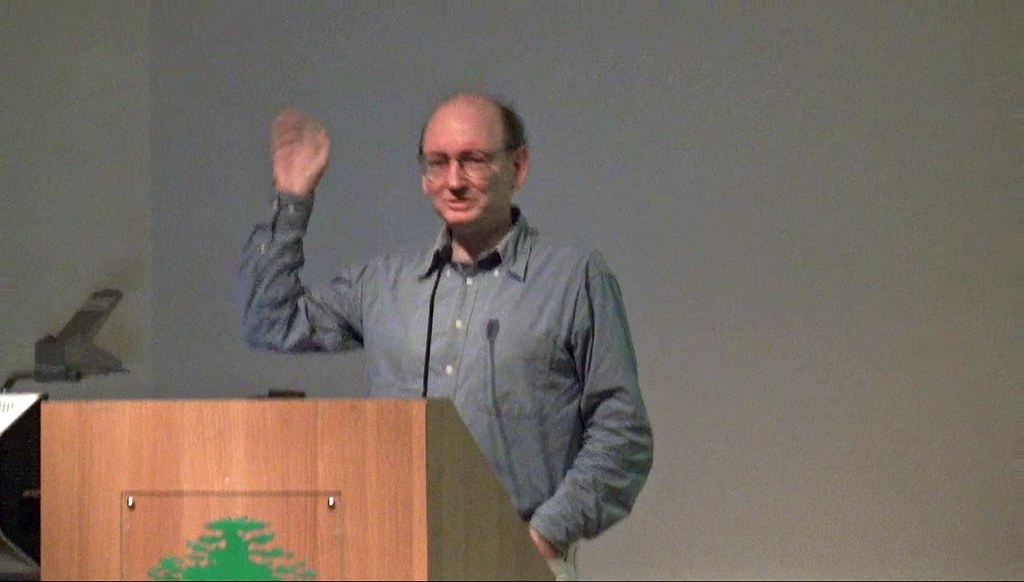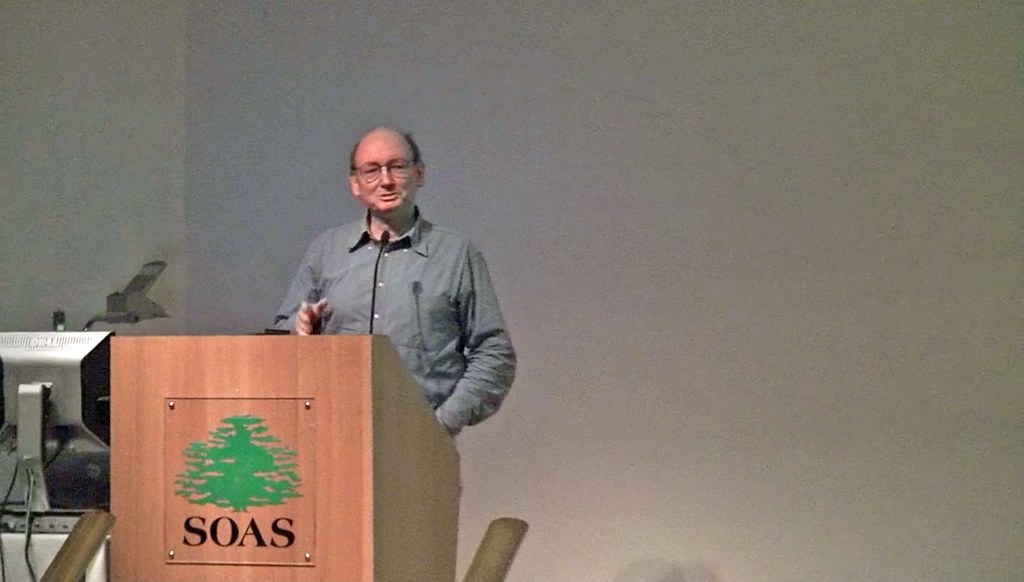
Friday, 7th March 2008
Brunei Gallery Lecture Theater
Jaina Art & Architecture
10th Jaina Studies Workshop at SOAS
Jain Sacred Places: Sammeta Śikhara
 Lecture: Jain Sacred Places: Sammeta Śikhara
Lecture: Jain Sacred Places: Sammeta Śikhara
Dr. Peter Flügel
SOAS
Abstract:
Sammeta Śikhara is the most important Jaina pilgrimage site. Twenty of the twenty-four tīrthaṅkaras, most prominently Pārśva, are said to have attained nirvāṇaon the peaks of Pārasnāth Hill in Jharkhand, which at some stage was declared to be a sacred mountain; though the historical Mount Sammeda may be located elsewhere, for instance at the Kuluvā-pahāḍ near Gayā. The pre-history of the pilgrimage site is uncertain. Since control of the mountain passed into the hands of the Śvetāmbara Jains of Murshidabad in the 18th century, places of worship were continuously constructed and renovated on top of the hill, and the village of Madhuban at the bottom of the hill was developed into a major pilgrimage town, in character similar to Palitana in Gujarat. The paper reviews the history and religious significance of the site, and the ongoing court cases concerning its ownership and management, waging for more than one hundred years between Digambaras and Śvetāmbaras, local Hindus, Naxalites, and the States of Bihar and Jharkhand. Regarding the contested concept of sacred place or tīrthain the Jaina tradition, the paper argues for an analytical distinction between ‘sites of empowerment’ that are intrinsically connected with exemplary religious acts, such as the kalyāṇaka-kṣetrasof the Jinas, and ‘sites of commemoration’ that are constructed at arbitrarily chosen places. The differentiation of sites of empowerment and sites of commemoration is supported by the existence of two types of shrines and temples, housing two types of representation of the Jinas: pādukāsand pratimās. A third type of representation is evident in Jain literature only: the bone relics of the Jinas, jiṇa-sakahā,possession and veneration of which, according to Rāyapaseṇaijja vv. 186f., generates not only welfare (hiya), happiness (suha), and forgiveness (khamā), but even salvation (nisseyasa). According to Viyāhapannatti 10.5.a (502b), it is conducive to the acquisition of magical powers (iḍḍhi).
 Lecture: Jain Sacred Places: Sammeta Śikhara
Lecture: Jain Sacred Places: Sammeta Śikhara
A second proposition of the paper is that the Buddhist distinction, in the Kalingabodhi Jātaka, between relics (shrines) of commemoration (uddesika-cetiya), relics of use (paribhoga-cetiya), and corporeal relics (sarīrika-cetiya) is useful for understanding Jain architecture, art and ritual practice; regardless of the fact that Jaina scriptures do not offer such a classification; most likely because the relics of the Jinas have not been preserved, and do not play a major role in Jain ritual culture, despite their prominence in Jain mythology. Current court cases address the scholastic (and economic) question whether Sammeta Śikhara as a whole is sacred or only specific parts of it. In Buddhist terms, the sacredness of the mountain or parts is predicated on its status as a relic of use rather than a relic of commemoration. The jina-caritrasassure us that the physical remains of the Jinas, corporeal relics, are beyond reach for human beings. Bhavadevasūri’s 12th century Pārśvanāthacaritravv. 363-93, for instance, tells us of the legendary washing of the relics of Pārśva, performed by the gods in the remote Kṣīroda milk ocean, before their final entombment in heavenly stūpas.
 Lecture: Jain Sacred Places: Sammeta Śikhara
Lecture: Jain Sacred Places: Sammeta Śikhara
In Jain mythology and cosmography, temples-images (relics of commemoration), sacred mountains-footprints (relics of use) and heavenly stūpas-bone relics (corporeal relics) are presented as successive stages on a continuum of progressive reflective abstraction from the principal tangible objects of identification, the real bodies of the Jinas, predicated on the master narrative of the stepwise removal of the physical substrata of sanctity. The remains of the Jinas, perceived sources of both purity and supernatural power, were carried beyond the visible world into the inaccessible realm of heavenly vimānasto make them unusable for human beings. The perceived link between purity and power is severed. Only typified representations of the body and persona of the Jinas and stylized traces of their exemplary lives remain in image-worshipping Jain ritual culture. By eliminating the opportunity of venerating the corporeal relics of the Jinas, Jain scriptures privileged tradition building through the routinisation of charisma over tradition building through objectified charisma, which was chosen by the Buddhist Mahāparinibbāṇasutta. Relic worship is not entirely rejected by the Jain scriptures. In the realm of the gods, empowerment through contact with bone relics of the Jinas is said to be possible. In terms of their inaccessible presence, the translocalised relics of the Jinas play a similar universalising and motivating role in Jain religious imagination as the concept of tīrthaṅkaras‘currently living’ in Mahāvideha, the distant continent functioning as an intermediary space between our world and the realm of the liberated souls.
 Lecture: Jain Sacred Places: Sammeta Śikhara
Lecture: Jain Sacred Places: Sammeta Śikhara
Pilgrimages to distant sacred mountains such as Sammeta Śikhara, situated between heaven and earth, ideally emulate this process of abstraction in the ritually generated experience of distancing and temporarily transcending everyday concerns. Akin to Jain pūjāand vandanārituals, the yātrāto Sammeta Śikhara re-orientates the true pilgrim, step-by-step, away from the externalities of the world towards the self-realization of the inner potential of the soul (a self-validating process because of the willpower required for climbing the mountain on an empty stomach). Looking down from the remote peaks of Mount Pārasnāth on the distant plains, most pilgrims from both Jain denominations feel hardly affected by the perpetual legal disputes and scholastic debates in distant cities. They rather enjoy the totalizing experience of being at a sacred place endowed by direct physical association with the Jinas with the dual potential of reinvigorating the individual Jain and serving as a unifying focus for the Jain community as a whole, as a place of coming together (samêta). That which originally was tangible and experience-near, the bodies of the Jinas, is now intangible and experience-far, while that which is experience-far, the qualities of their inner soul, appears to be experience-near, both in the perception of the ideal pilgrim and in the abstract commemorative representation of the liberated arhats, the Jina image, at home.
As the pilgrim advances, its perceived connection with the Jina’s relics of use is conceived as a form of empowerment. How is this possible? The popular Jain view is that ascetic powers can be transmitted through direct physical contact, but not through symbolical acts of commemoration. This belief contradicts Jain karma theory, but arguably makes sense in functionalist, socio-psychological terms. From the point of view of the doctrine of karma, the source of empowerment offered by Mount Sammeta is not located in the artistic representations of relics of use on top the hill, nor granted by the mountain god Bhūmiya jī who is worshipped before the ascent, but predicated on acts of ascetic self-exertion which themselves are physical forms of self-empowerment, not mere acts of veneration of asceticism. Yet, as this paper intends to show, it is only the belief in the former presence of the Jinas which furnishes the inspiration for such extraordinary practices of voluntary self-mortification.
Video:
SOAS - 10th Jaina Studies Workshop [08-1] Jain Sacred Places: Sammeta Śikhara
SOAS - 10th Jaina Studies Workshop [08-2] Jain Sacred Places: Sammeta Śikhara
SOAS - 10th Jaina Studies Workshop [08-3] Jain Sacred Places: Sammeta Śikhara
SOAS - 10th Jaina Studies Workshop [08-4] Jain Sacred Places: Sammeta Śikhara
Full Speech Audio:
|
 Dr. Peter Flügel
Dr. Peter Flügel